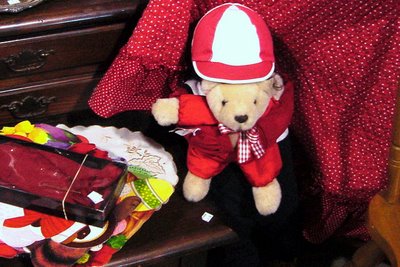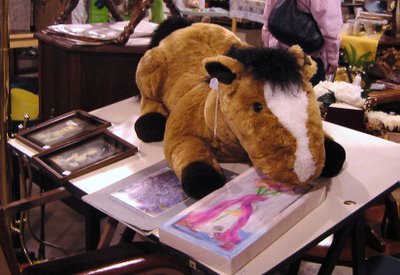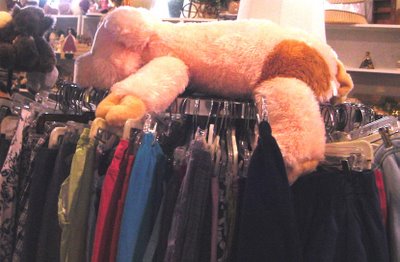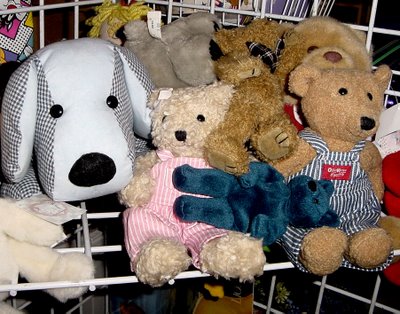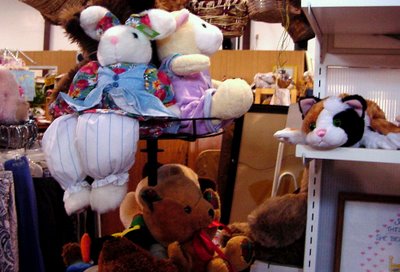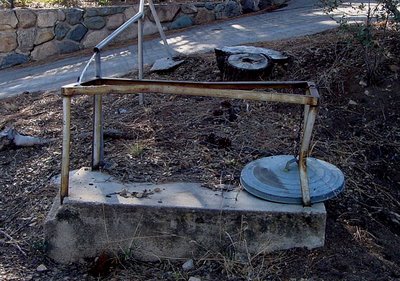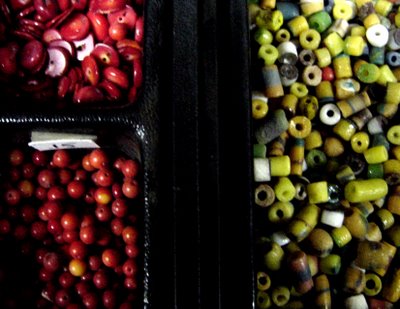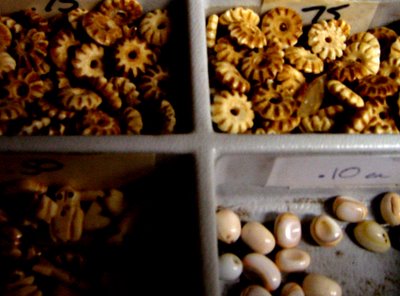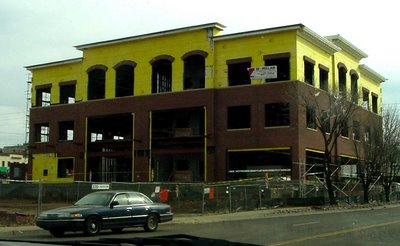You know the drill: if you are a proper Victorian lady, you pluck a pretty here and a pretty there from your garden and carefully place them in the middle pages of a large, heavy book to dry. If you caught the bridesmaid's bouquet at a wedding, you might do the same with one of the blossoms (although roses are mighty hard to really flatten!) And if you are a botanist gathering field specimens, you have special papers and pressing frames to lug out into the field -- or at least to your camp.

What happens to carefully selected and pressed flowers? Often, they are forgotten and found by a grandchild exploring grandma's library for the first time. Rarely, they are arranged and framed, like the displays above. One was made by my mother-in-law, the other by my husband. The botanists' finds join others in one herbarium or another.
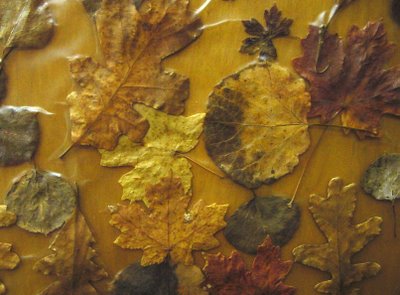
A more modern form of the classic pressed botanic specimen is this collection of autumn leaves my nephew's wife sealed between two layers of sticky shelf plastic. I've had this panel on my office doorway for well over 15 years. Much of the color has faded, tho the reds still make their presence known.
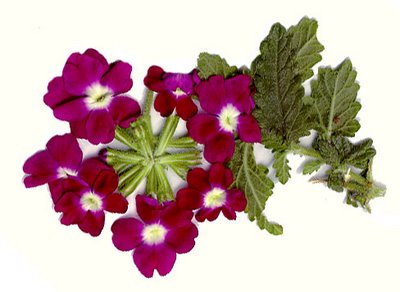
For the up-to-date version of pressed flowers, take a look above. One day, the late husband had this bright idea and sent me out to my potted garden to gather flowers and leaves. He arranged the specimens on the platen of our new HP scanner and let her rip. I guess you could call the result virtual pressed flowers (and leaves.) Here are some of the scans I found in the archives:



Virtual advantages: the colors are almost as brilliant as the original (and can always be PhotoShopped to outshine Nature.) Why not just settle for photographs? At the time these were made, LH was still working with film which took t-i-m-e (finish the roll, take it to be processed, wait a couple of days, pick it up, scan it. Ugh.) Today? I'm not so sure; specimens can rapidly be arranged, photographed and downloaded tho a real herbarium specimen offers the botanist DNA for potential study in the future. However, for the lay person direct scanning is an interesting design approach. It certainly isn't limited to plant material!

At the time we were playing around, scanning was new to us. In retrospect, I am reminded of the early days of that ubiquitous office scanner of the 60s, the Xerox machine. Youngsters who never had to cope with purple ditto masters or correcting typos on a mimeograph stencil will never ever understand in their guts what a Revolution the Xerox brought to the world. Or what a great new toy it was. Office wags made copies of their bare bottoms; prissier ladies copied their keys, and the kids -- their hands and anything they could lay their hands on. Suddenly everybody was a publisher. Which probably helped bring down the USSR.

I already have a couple of projects in mind dealing with material that is difficult to light properly. When I get my own, comfy computer back. (I still feel like I am working in a motel room and forgot to bring along all the right gear.)

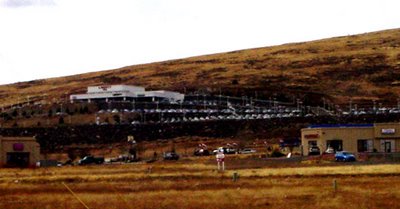 The rise in this picture is the lower, Southeast slope of our very own volcano, Glassford Hill. For most of my years in Prescott, it was a pleasant small mountain, clean, with no man-mades to ruin the prospect. No longer. Prescott Valley can't grow fast enough for its city fathers. So what's wrong with a car dealer up on the mountainside. Good way to get noticed. Especially at night, when the place is all lit up. In fact, it is so bright that a friend and my daughter, independently, call it The Mother Ship. Truly garish, it is.
The rise in this picture is the lower, Southeast slope of our very own volcano, Glassford Hill. For most of my years in Prescott, it was a pleasant small mountain, clean, with no man-mades to ruin the prospect. No longer. Prescott Valley can't grow fast enough for its city fathers. So what's wrong with a car dealer up on the mountainside. Good way to get noticed. Especially at night, when the place is all lit up. In fact, it is so bright that a friend and my daughter, independently, call it The Mother Ship. Truly garish, it is. In contrast: this huge hillside apartment complex which matches the basalt outcroppings and almost looks as if it might be a monastery. The architect or builder should be congratuated for restraint, tho I'm told that at night, when the tenants all are home from work, the lights do come on.
In contrast: this huge hillside apartment complex which matches the basalt outcroppings and almost looks as if it might be a monastery. The architect or builder should be congratuated for restraint, tho I'm told that at night, when the tenants all are home from work, the lights do come on. Nearby, a sight that truly makes me shudder -- blades lined up cheek by jowl on both sides of SR69, California-style, ready to flatten more mountain for more shopping center. Just what we need -- lots of sales tax for the government and low-pay retail jobs for the subjects. BTW, I'm not ranting -- just commenting. But take a read of former PV councilman Tom Steele's blog, The Truth Prescott Valley. Might well get your juices worked up. And while I'm on the subject of PV, Steve Words had something to say about a concert at the new arena over east of Glassford Hill.
Nearby, a sight that truly makes me shudder -- blades lined up cheek by jowl on both sides of SR69, California-style, ready to flatten more mountain for more shopping center. Just what we need -- lots of sales tax for the government and low-pay retail jobs for the subjects. BTW, I'm not ranting -- just commenting. But take a read of former PV councilman Tom Steele's blog, The Truth Prescott Valley. Might well get your juices worked up. And while I'm on the subject of PV, Steve Words had something to say about a concert at the new arena over east of Glassford Hill.

